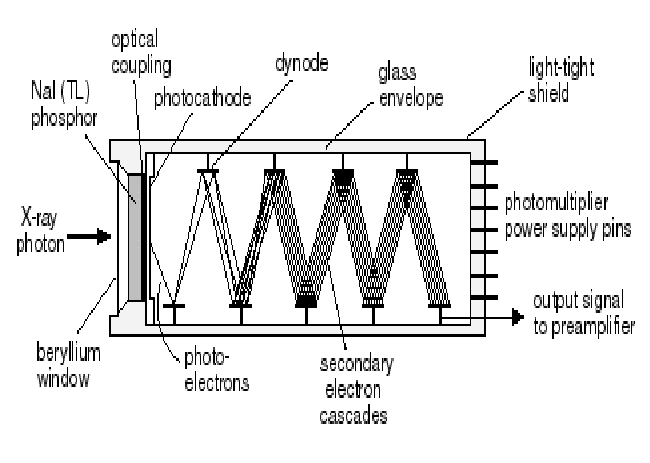The Scintillation Counter
A scintillation counter is used to detect nuclear radiation. When radiation is incident on the phosphor, a tiny pulse of electricity is emitted from the photocathode by photoemission of electrons. Early detectors were placed in dark rooms so this pulse could be detected.

The tiny pulse of current is amplified using a series of charged plates. These electrons are then pulled towards a series of plates, called dynodes, through the application of a positive high voltage. When electrons from the photocathode hit the first dynode, several electrons are produced for each initial electron hitting its surface. These electrons are then pulled towards the next dynode, where more electron “multiplication” occurs. The sequence continues until the last dynode is reached, where the electron pulse is now millions of times larger then it was at the beginning of the tube. At this point the electrons are collected by an anode at the end of the tube forming an electronic pulse. The pulse is then detected and displayed or counted by the system. Scintillation detectors are very sensitive radiation instruments and are used in both portable and stationary systems.